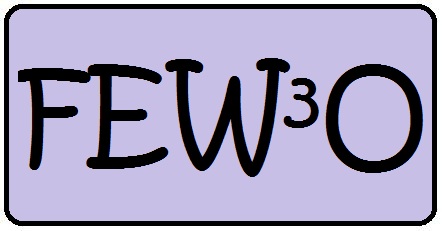Analyses of Turbulent Submeso- and Mesoscale Processes using SAR Data
Contents
Submesoscale Eddies in the Mediteranean, Baltic and Red Sea:
Mediterranean Sea
We used about 1700 Envisat ASAR WS and ERS-2 SAR medium resolution images acquired in 2009-2011 over the Black and eastern Mediterranean seas to reveal the spatial and temporal (seasonal) distribution of submesoscale eddies and thus investigate submesoscale eddy activity in these basins and eddy visibility in SAR imagery.
In total, about 13.000 submesoscale eddies were found. Eddies were detected in about 46% of the images analyzed. Most of the eddies were cyclonic (about 90%) though in the Aegean Sea the percentage of anti-cyclonic eddies was higher due to local coastal topography. About 63% of eddies manifested in the SAR imagery due to surfactant films, i.e. they were “black” eddies, while the rest 37%, through wave-current interactions (“white” eddies). Most of the “black” eddies (about 64%) were detected in the Black Sea presumably due to higher bioproductivity and resulting higher concentration of surfactants there. “White” eddies were distributed more or less evenly between the two basins thus letting us conclude about close wind conditions above them, which cause similar effects on surface currents. Most of the images analyzed covered the western part of the Black Sea, eastern edge of the Mediterranean Sea as well as the Aegean Sea and therefore most of the eddies detected were also located there. However, the normalized densities (number of eddies per image within a resolution cell) show evidence that the observed heterogeneity is not simply due to the inhomogeneous coverage by SAR imagery, especially for “white” eddies.
“Black” eddies were found mostly in coastal areas where there are more favourable conditions for eddy generation (e.g., via later friction) and visualization (due to higher concentration of surfactants). “White” eddies were found both in the coastal area and further offshore where both wind and surface currents can reach higher speeds. Area with especially frequent observation of “white” eddies was one along the western coast of the Black Sea. In the Mediterranean Sea such an area was the southern part of the Levantine Basin.
Due to seasonal variability of the near-surface wind speed and availability of the surfactant films “black” eddies were observed mostly during the warm period (spring and summer), while “white” ones, during the cold period (autumn and winter). In the area along the western coast of the Black Sea, where winds and resulting currents are strong enough throughout the year, “white” eddies were found during all the seasons. In the Mediterranean Sea, eddies of both types of visualization were mostly detected during autumn when there are apparently favourable conditions for eddy generation (due to thin upper mixed layer) and visualization (due to available surfactants and required near-surface wind speeds).
Red Sea
We used more than 500 Envisat ASAR WS images acquired in 2006-2011 over the Red Sea to study the spatial and temporal distribution of eddies at sub-meso-, meso-, and basin-scale. Most of the images covered the northern part of the basin and therefore, most of the eddies detected were also located there. However, the normalized densities (i.e. the numbers of detected eddies per image resolution cell) show evidence that the observed heterogeneity is not simply due to the inho-mogeneous coverage by SAR imagery, but that a general trend exists of a greater number of sub-mesoscale eddies in the northern part of the basin (north of 20°N).
In total more than 1000 sub-mesoscale eddies were found, which is about two eddies per SAR image. This is generally less than previous studies revealed for the Baltic, Black, and Caspian seas. We hypothesize that this finding is linked to the greater depth of the upper mixed layer in the Red Sea (about 100 m), but also to the overall shape of the (narrow) basin and to the different circulation within the basin.
“Black” eddies, i.e. eddies manifesting in SAR images through the accumula-tion of surfactants along the shear lines, were found mostly in coastal areas, while “white” eddies, i.e. manifesting through wave-current interactions, were found further offshore. In general, “black” eddies visualize in SAR images at lower wind speeds, since the surfactants start to disrupt when the wind speed increases.
We also found about 50 meso- and basin-scale eddies with diameters up to ap-prox. 200 km. Their rotation was both cyclonic and anti-cyclonic; however, most of the basin-scale eddies (with diameters exceeding 100 km) were found to be an-ti-cyclonic, which is in contrast to the smaller, sub-mesoscale eddies. Those basin-scale eddies were mainly found in SAR images acquired in spring, and they were located between 21°N and 24°N, which supports the hypothesis of Quadfasel and Baudner (1993) that wind forcing and interactions with the local topography in that area are the main generation mechanisms.
SAR imagery of six consecutive years is certainly not sufficient for the deriva-tion of complete climatologies, particularly if the entire basin was not covered homogeneously. However, our results indicate very well that the systematic anal-yses of SAR imagery with respect to the detection of sub-mesoscale, mesoscale, and basin-scale eddies has great potential to further the knowledge about the hy-drodynamics in certain sea areas or in enclosed or semi-enclosed seas.
Baltic Sea
As a result of the analysis of 1250 Envisat ASAR WS images acquired in 2009–2011, the spatio-temporal distribution of 6878 sub-mesoscale eddies in the Baltic Sea was investigated. Separate statistics were performed for ‘black’ eddies, which manifest on SAR images as reduced surface roughness due to the accumulation of surfactants on the sea surface, and for ‘white’ eddies, which manifest as enhanced surface roughness due to wave–current interactions in zones of shear currents.
Since the visibility of eddies in SAR imagery is significantly dependent on the nearsurface wind speed during image acquisition, a method for excluding the influence of wind speed inhomogeneity on eddy statistics is proposed. This method is based on the assumption that only those parts of SAR images should be considered for the calculation of eddy statistics which were acquired when wind speed conditions were favourable for the visualization of either kind of eddy manifestation (‘black’ or ‘white’ eddies).
The proposed method, applied using model wind speed data, allowed for the generation of improved sub-mesoscale eddy statistics which were then used to better characterize the spatio-temporal distribution of sub-mesoscale eddies in the Baltic Sea. As a result, and despite the fact that ‘black’ eddies were observed throughout the Baltic Sea during the warm seasons, we showed that the southwestern part of the Baltic Sea seems to have especially high sub-mesoscale eddy activity.
In order to provide better insight into the basic mechanisms behind the observed eddy distributions, a comparison of seasonal eddy density fields and corresponding fields of near-surface wind speed, SST, surface currents, and SST gradients was performed. We found that in some areas (especially in the southwestern Baltic Sea), areas with high (mean) ‘black’ eddy density frequently coincide with sharp (mean) thermal fronts. ‘White’ eddies tend to manifest in, or close to, areas, where SST fronts and strong surface currents overlap. These findings suggest that thermal fronts and corresponding frontal instability play a significant role in the formation of sub-mesoscale eddies in the region of interest. In order to further support this hypothesis, SST gradients were calculated using AVHRR images at places and times close to the eddies detected. The thermal gradients in the vicinity of ‘black’ eddies were generally higher compared with the entire AVHRR images used for the analysis. For ‘white’ eddies such a tendency was not observed, which is likely to be due to the observed spatial shift between high ‘white’ eddy density and sharp thermal fronts.
For a more in-depth analysis of the temporal variability of eddy occurrences in SAR images, the mean daily number of eddies per unit area of SAR imagery with favourable wind conditions was calculated. Averaging this parameter over all 3 years of the observations revealed that the period of highest (overall) sub-mesoscale eddy activity was from July to October. Presumably this can be explained by the moderate wind speeds and shallow thermocline depths observed during this period, along with a higher bioproductivity, due to which significant amounts of surfactants can be always found on the sea surface.
As a by-product of the research performed, the wind speed limits of the visibility of ‘black’ and ‘white’ eddies in SAR imagery were statistically revealed. Those limits indicate that ‘black’ eddies, or biogenic surface films in general, manifest in SAR imagery at wind speeds ranging from 0.2 to 5.6 m s−1, while ‘white’ eddies” are found when the wind speed is in the range from 0.6 to 12.5 m s−1. This finding is in good agreement with previous studies performed using in situ (buoy) wind speed measurements (DiGiacomo and Holt 2001; McKinney, Holt, and Matsumoto 2012).
Maria S. Merian Cruise 72 / March 2018

 To get to the internal pages click here.
To get to the internal pages click here. 
 ... back to the KFEW3O Page (in German) ...
... back to the KFEW3O Page (in German) ...
